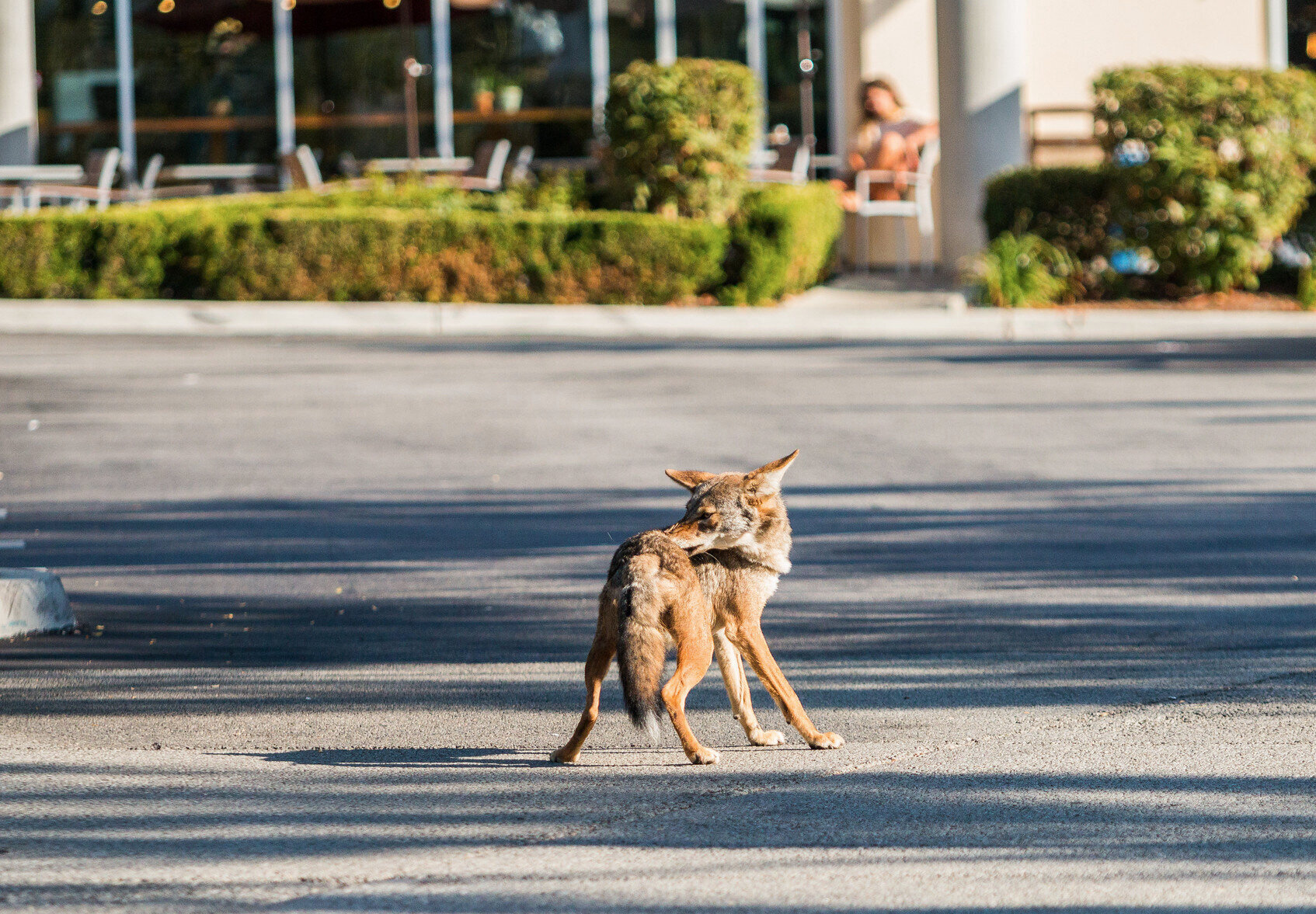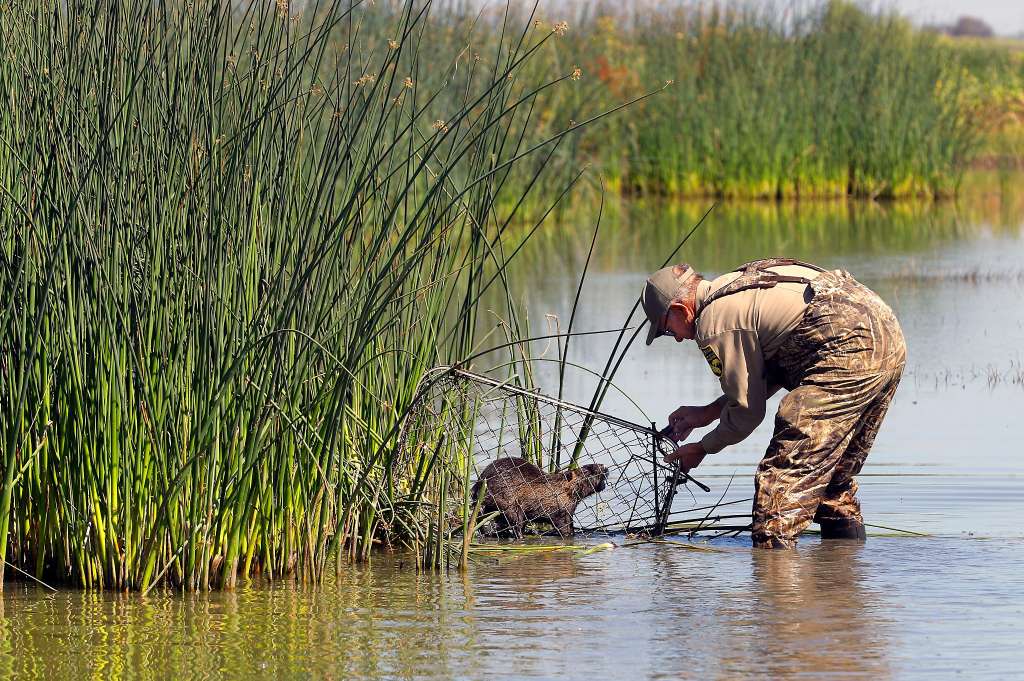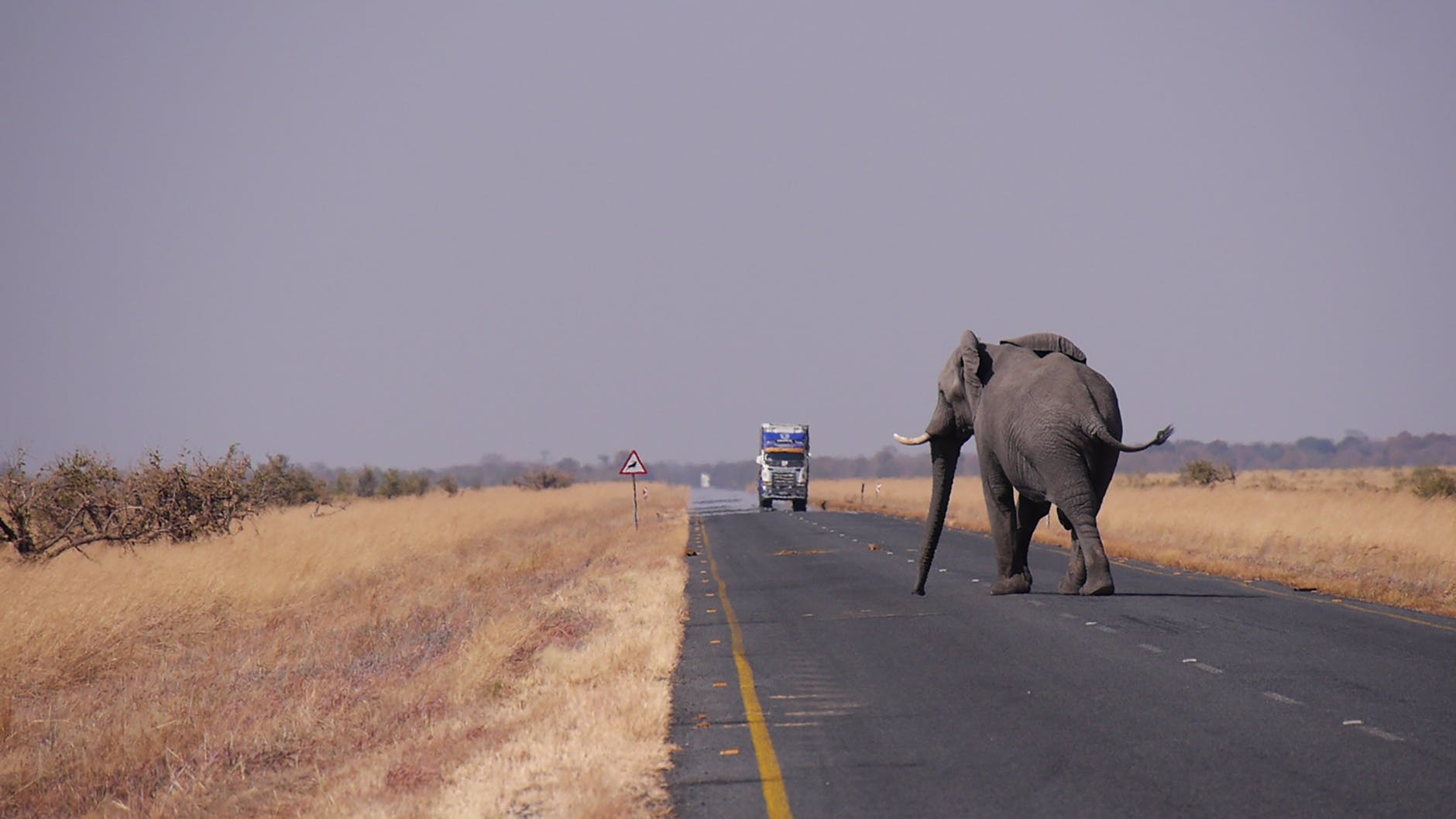Conservation & Cultural Carrying Capacity
Today, the American public is incredibly polarized. Information is sent to our phone screens and inboxes at lightning pace. The sad reality is that much of this information, whether its news, politics, religion, environmental, or otherwise, is often one-sided or spun from a singular point of view. There is little obligation to give credence to cold, hard facts if they don’t fit the parameters of a given argument. Discourse, disdain, and a desire to be on the “right” side of debate tends to influence our public and our politicians. While wildlife management protocols have historically tried to keep emotion out of the decision making process, today’s political climate isn’t always focused on science and the “greater good” of overall biodiversity. Increasingly, there is a growing desire from hunting critics to “skirt” wildlife management fundamentals, and dupe political appointees into dictating ulterior ideals.
So what happens when politics are introduced into (what should be) non-biased wildlife management?
Bear Hunting: Maine & New Jersey
Manipulation of the ESA
Rise of the Dumpster Cats
Massachusetts Question 1
Position Statement
Bear Hunting: Maine & New Jersey
In 2014, Maine’s conservationists and wildlife agents found themselves in a square-dance with well-funded animal and environmental protectionist groups. Question 1, known infamously as the “Maine Bear Referendum” was manufactured to place heavy restrictions on the state’s bear hunting protocols. In 2013, the Humane Society of the United States (HSUS) pushed heavily for the restrictions. Maine voters had previously rejected a ban in November of 2004. With national support from HSUS, a small group of Maine residents formed “Mainers for Fair Bear Hunting” (MFBH), and began collecting the 57,277 signatures needed to place the question on the 2014 ballot. 63,626 signatures were confirmed by the Secretary of State, and, under Maine law, MQ1 was submitted to the legislature and eventually placed on the voter ballot. Media outlets reported HSUS invested $780,000 into Question 1, giving those funds directly to MFBH for campaigning.
The Maine Department of Inland Fisheries and Wildlife (DIF&W) and DIF&W Commissioner Chandler Woodcock officially opposed the referendum. When hunting critics began heavily campaigning, the Department opted to do the same, and emphasized biologist testimonials on why aspects of bear hunting were important to wildlife management in Maine. MFBH sued; stating "We do respect the agency’s right to provide factual information to voters, but they’ve repeatedly gone above and beyond that, and it’s time for that to stop." A judge ruled that “DIF&W’s speech is on topics squarely within ‘its competence as governor’ of Legislative directives.” Maine’s Attorney General called the ruling a victory for free speech. The referendum was defeated with 320,873 "No" votes to 279,617 "Yes". After the failure of the referendum, it was speculated that the referendum’s presence on the ballot aided in the reelection of Governor Paul LePage, as it brought voters out to the polls.
In 2018, New Jersey Governor Phil Murphy signed an executive order effectively ending his state’s planned bear hunt on all public lands. It was an attempt to fulfill a campaign pledge Murphy allegedly made to environmental activists prior to the election. In a twist of irony, those activists, including the NJ chapter of the Sierra Club, bit back at the Governor stating his promised order didn’t “go far enough” to stop the hunting of bears. In what is arguably the most densely populated state in the country, the Governor’s closing of 700,000 acres of public land to regulated bear hunting effectively bottle-necked the state’s ability to manage and monitor growing bear populations. As of late 2018, Governor Murphy was still caught in the political crossfire of two pending lawsuits from opposite sides of the debate.
Manipulation of the ESA
Many groups critical of regulated hunting and trapping have since relied on the Endangered Species Act to block wildlife management protocols; even in cases where the species in question have been scientifically deemed recovered or sustainable. Bears, particularly Grizzlies in Canada and the United States, as well as wolves, and even Lynx and Cougars have all seen never-ending lawsuits and heavily funded court battles to keep their swelling populations on the ESA list, and out of state management control.
For example, despite continued nuisance issues, conflict, and human deaths associated with an expanding Grizzly Bear population in both the US and Canada recently, the animal remains protected throughout much of its range; amid several lawsuits and requests from wildlife agencies to delist the species in the wake of specified recovery target goals being met in these regions. Grizzlies living in and around Yellowstone National Park, for example, don’t intermingle with a population living closer to the Canadian border. The geographical distinction means the ESA can list a “Yellowstone population” differently than those farther north. In a 2018 court ruling prohibiting removal of grizzlies from protected status around Yellowstone, Judge Dana Christensen ruled state agencies had not “considered the long term genetic health of the Yellowstone population”. In his ruling, Christensen states the absence of “connectivity” with grizzlies in other parts of the region leaves the Yellowstone grizzlies “genetically vulnerable”. Who can forget the ongoing back and forth tug-o-war over wolf management in the mid-west United States and Canada? For years, wolves are legally taken off the ESA list in many regions only to be reinstated after lawsuits from environmental groups.
Attempts have also been made to end hunting and trapping of river otter, bobcats, and bears via manipulative attacks on the Convention on International Trade in Endangered Species of Wild Fauna and Flora (CITES) program and the Lacey Act law, which regulate the sale of pelts and hides from these and other mammals. A 2017 lawsuit by animal protectionist organizations would essentially "do away with the CITES export program," according to attorneys for the Fur Information Council of America, Montana Trappers Association and National Trappers Association. "They are seeking to interfere with the way the States and Tribes manage their wildlife, by forcing them to limit, if not eliminate, the harvesting of furbearers and restrict the means by which trapping is conducted," attorneys Ira Kasdan and Gary Leistico wrote in a motion to dismiss the case.
These regulations help to monitor and record population trends across the United States and Canada via tagging programs that help promote regulated conservation of the species in question. Without regulated harvest on the landscape, this important record-keeping would fail to exist as it currently does.
Rise of the Dumpster Cats
The N.H. Fish and Game Commission voted in October of 2015 in favor of initiating rule-making for a bobcat hunting and trapping season, after UNH studies found the ‘cat population had grown statewide and could sustain a conservative harvest. The proposal would have opened the door for additional monitoring and data collection on the species through regulated take of a small number of bobcats each year, while also allowing for progressive growth of the population at a controlled rate. National animal rights and environmental preservation organizations flocked to the region to fight the proposal - which was subsequently withdrawn by the Department after theatrical public hearings, death threats, and political discourse proved too much to handle.
Trapper and school teacher Mike Morrison testifies during New Hampshire’s bobcat season proposal hearings.
On April 1, 2016, the NH Joint Legislative Committee on Administrative Rules (JLCAR) entered a “Preliminary Objection” to the text of the proposed administrative rule regarding a “Limited Bobcat Season” (proceeding #2015-206). The stated reason for rejection of the approval was due in part to fears of hunters confusing bobcats with the ESA protected Canada Lynx (which is found in extremely limited numbers in Northern NH). It wasn’t long after the political withdrawal of the bobcat season proposal when truck beds of state vehicles began to regularly fill with sick or road-killed bobcat carcasses. Once a true gift to catch a glimpse of the elusive bobcat on NH’s landscape, was now an almost daily occurrence of peeling road-killed ‘cats off of the state’s roadways.
Today, social media accounts and local news outlets remain steadily flooded with grainy cell-phone images of bobcats roaming suburban parks and inner-city backyards, snoozing under bird-feeders and stalking local domestic pets. Calls regarding bobcats exhibiting rabid or sick behavior have now become the norm, with three confirmed cases in less than five years, and countless more who were suspected of rabies never tested due to state “funding limitations". With no regulated hunting season or management plan, the influx in bobcats are now subject to uncontrolled forces - disease, starvation, depredation, and of course mortality by way of vehicle kills, loss of habitat, and conflict with domestic livestock. These bobcats are mandated to be thrown away with the trash, due to a stipulation that without a regulated season, the carcasses or pelts cannot be utilized. Locals have nicknamed the once prolific animals “Dumpster Cats”, to describe their current state in New Hampshire.
According to state wildlife biologists, without hunting or trapping, officials can’t manage the dynamics between the species. “It’s sit back and let nature do its thing and see which population wins” says NH furbearer biologist Patrick Tate, during an interview on the bobcat season proposal. The proposed season would have required carcasses of harvested bobcats be turned over to the Department to facilitate the collection of critical bobcat population information. Hunters would also have been required to fill out data forms to enable the Department to track harvest efficiency (catch per unit effort) and participant observations, all of which would have provided the state with useful trend data, greatly enhancing knowledge and continued insight into future bobcat populations.
Every state and province that borders the 9,000 square land miles of New Hampshire has a regulated bobcat management plan in place. Indiana went through a similar battle when the IDNR proposed a bobcat season in spring of 2018. Albeit the IDNR process was not quite as dramatic as New Hampshire’s, Indiana’s commission opted to reject the season proposal sighting lack of population estimates. Connecticut DEEP is currently working on bobcat population dynamics in their state with the assistance of licensed trappers.
Massachusetts & Question 1
In November of 1996, Massachusetts voters approved a ballot initiative titled the “Wildlife Protection Act”. The initiative was launched by the Humane Society of the United States, along with a group calling themselves the ProPAW Coalition (Protect Pets and Wildlife), which spent considerable funding on TV ads depicting house cats in foothold traps and dogs missing legs. The slogan “Ban Cruel Traps” evidently resonated with 64% of the state’s citizenry - securing the initiative’s passage. Prior to 1996, MA Fish & Wildlife would contact licensed trappers to help remedy beaver conflict situations. The system worked well; as trappers would make a little money off pelts and beaver glands, the state would collect a little license revenue from trapping licenses, and residents would be relieved of beaver conflict (in the form of flooding to property and roads, compromising septic systems, and polluting wells).
In two and a half years following the ban, Massachusetts’ beaver population expanded from 18,000 to almost 55,000 according to reports. Lawmakers scrambled to make changes to the ban when impatient residents, who had become completely dependent on MA Fish & Wildlife to handle beaver complaints, began breaching beaver dams in the dead of winter (when beavers don’t repair them, and endangered reptiles and amphibians are vulnerable to fluctuating water levels). Whatever negative picture animal rights activists tried to paint of trappers before the ban, it paled in comparison to what unfolded in the state’s ponds, rivers and streams after the ban.
Massachusetts isn’t the only state to bear witness to the repercussions of trapping referendums. California had similar issues after 1998’s Proposition 4 vote, which greatly impacted management of predators such as coyote and fox by outlawing rubber-padded foothold traps. Our full report on Massachusetts’ Question 1 and California’s Prop4 can be found on our “World Without Trapping” tab under this section.
Position Statement
The examples above are a very small accumulation of the missteps that have historically developed as a result of politics muddying sound wildlife management decisions. Lawmakers and policy advisers nationwide will inevitably be dragged into a wildlife management debate. Legislators will either see through the confusion created by groups opposed to regulated usage of natural resources, or they will fall victim to the hype; either knowingly, or unknowingly eviscerating the success of the North American Model of wildlife management.
As much as some on both sides of the hunting argument want to make wildlife management a partisan one, it shouldn’t be. Wildlife management protocols should be focused on rationale and support for biodiversity as well as conserving wildlife. When applicable, the Furbearer Conservation project recognizes that opportunity for the general public to utilize wild resources should also be considered by lawmakers.
When strong-arming a state wildlife agency into one’s personal views doesn’t work, the next step, more often than not, is to turn to legislators and lawmakers to force rule changes. This often removes the “ethical” approach of non-biased decision-making from the conservation toolbox. The fact that hunting and trapping, in a regulated fashion, is proven to benefit wildlife biodiversity does not suggest decisions have been made solely to support hunters and trappers. With increased scrutiny placed upon state agencies, a management decision is typically initiated with biological, environmental, and public well-being in mind. If anything, modern management regulations are overly conservative - both for protection of the resource as well as resulting from years of criticism. The fact that assertions are still made suggesting wildlife agencies cater only to the “hook and bullet” crowd in 2019 is both mind-numbingly vapid and, in most cases, void of hard evidence.
Furbearer Conservation recognizes lawmakers and the legislative process are important. It should be a respected and coveted cog in the societal wheel to ensure government agencies are held accountable and kept in check. In today’s polarized climate, especially with regard to wildlife management, its anything but. We believe wildlife management should be mainly non-subjective, and based on the best-known facts and data to support continued conservation of wild resources and health of wild biodiversity, while also allowing an opportunity for self reliance activities carried out by those who wish to do so. Managing wildlife from inside a courthouse or representative hall can sometimes have disastrous consequences. We will continue to offer testimony to assist lawmakers and managers make decisions based on reasonable logic. In turn, we will continue to offer criticism and critique for frivolous or poorly constructed legislation as we see fit.


















An animal rights group in New Hampshire has petitioned the state’s Fish and Game Department over regulations for the hunting of coyotes in the state. The petition comes just a month and a half after the state’s legislators rejected a House Bill seeking to restrict coyote hunting in the state.